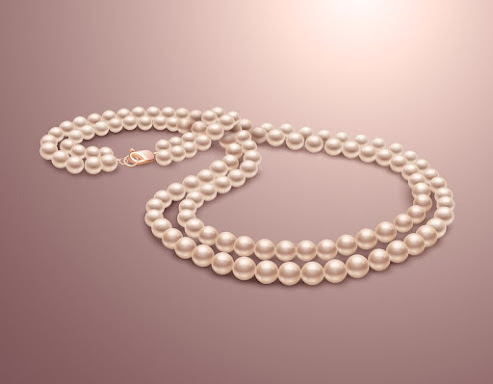Exploring The Historical Importance of Pearl Jewelry
Introduction
Pearls have been adored for millennia for their stunning beauty, rarity, and timeless elegance, shaping the captivating history of pearl jewelry and taking us on a fascinating journey through time. These exquisite gems hold a unique and cherished position in the world of gemstones and adornments, enchanting people from ancient civilizations to modern fashion trends.
In this article, we'll delve into the rich significance of pearls throughout history, their cultural importance, and explore the pearls in traditional jewelry. So, if you're curious about the captivating world of gemstones or eager to discover the secrets of pearl jewelry through the ages, then buckle up and join us on this exciting exploration!
Historical Origins The Pearls
The history of this gemstone traces its roots back to ancient civilizations where they were cherished for their natural beauty and scarcity. Mesopotamia, one of the cradles of civilization, saw early civilizations diving for gems as far back as 2300 BC. The Persian Gulf was another prolific source of the stone, highly prized by ancient Persians for its exquisite quality.
In the tombs of Egyptian royalty, the stones were discovered, underscoring their status as symbols of wealth and luxury. This gemstone in China dates over 2000 years ago, with the Han dynasty showcasing early examples of adornments. In India, there is a deep cultural importance of gems symbolizing purity and love, particularly in wedding ceremonies as mentioned in the Rigveda, an ancient Hindu text.
Symbolism and Significance
Across various cultures, this stone has been revered and cherished, the symbolism and significance of pearls in history are unique. In India, it was seen as a symbol of purity and love, believed to bring blessings of prosperity and happiness to couples during weddings.
The Islamic tradition holds gems in high regard, mentioning them numerous times in the Quran as symbols of beauty and purity. The Prophet Muhammad likened a believer reciting the Quran to someone adorned with garlands and precious stones, emphasizing their spiritual significance.
Western cultures, especially during the Renaissance era, were viewed as symbols of wealth and status. Royals and nobles adorned themselves with extravagant jewelry, with Queen Elizabeth I of England famously depicted wearing lavish necklaces and earrings made of this gemstone, cementing its association with opulence in European culture.
Evolution of Jewelry Through Ages
The Renaissance and Victorian periods marked significant milestones in the evolution of pearl jewelry, shaping its design, production, and cultural significance.
Renewed Interest in Pearls
The Renaissance era witnessed a renewed fascination, stemming from a revival of interest in classical art and culture. The stone became prominent features in jewelry worn by royalty, nobility, and wealthy merchants, reflecting their status as prized gemstones.
Advances in Technology
The Victorian era saw advancements in the cultivation of this stone and jewelry production, making gems more accessible. Innovations in cultivation techniques led to a wider range of sizes, shapes, and colors, democratizing the jewelry and making it attainable for a broader segment of society.
Creative Design Innovations
Victorian-era jewelry showcased intricate motifs like flowers, leaves, and delicate scrollwork. Sentimental themes such as affection and remembrance were expressed through the use of seeds in delicate designs, reflecting the era's romantic sensibilities.
Historical Importance of Pearl Jewelry
Timeless Elegance: Stone jewelry has a unique ability to exude timeless elegance, adding a touch of sophistication to any ensemble.
Symbol of Sophistication: Gems are often regarded as symbols of sophistication and refinement, making them a favorite choice for those seeking classic and chic accessories.
Cultural Significance: Throughout history, gems have held deep cultural significance, representing purity, love, and prosperity in various cultures around the world.
Versatile Fashion Statement: Stone jewelry offers versatility in fashion, seamlessly transitioning from casual to formal occasions, making it a must-have accessory for any wardrobe.
Investment in Luxury: Gems are not only exquisite adornments but also valuable investments, retaining their allure and value over time, making them a cherished part of one's jewelry collection.
Contemporary Trends in Pearl Jewelry Design
Modern jewelry designs blend traditional elements with contemporary styles, embracing asymmetry, mixed materials, and minimalist aesthetics.
Asymmetrical and Unconventional Shapes
Designers experiment with baroque and irregularly shaped gems, moving away from traditional rounds to create unique and artistic pieces.
Mixed Materials
These gems are combined with leather, metal, or gemstones for a bold and edgy look, appealing to younger demographics while retaining elegance.
Minimalism and Simplicity
Delicate jewelry featuring single stones or small clusters caters to those preferring understated elegance, aligning with minimalist fashion trends.
Caring for and Maintaining Jewelry
Proper care and maintenance are crucial to preserving the beauty and longevity of jewelry. Cleaning, storing, and wearing it correctly ensure they remain exquisite pieces for years to come, continuing their legacy as timeless treasures.
Future of Pearls
The future of the stone is intricately tied to environmental factors like climate change, disease, and pollution, rather than just overharvesting. Just as we monitor resources like natural gas and coal, we must also pay attention to the impact of these changes on oysters, the creators of stone. Climate change affects oysters' growth rates, with warmer waters speeding up gemstone development but diminishing their quality. Tropical storms and increasing salinity are also challenges for farmers. Gemstone enthusiasts must support sustainable practices and initiatives to ensure a vibrant future for these exquisite gems.
Conclusion
In conclusion, the historical importance of this stone’s jewelry is a testament to its enduring allure and cultural significance. From ancient origins to modern interpretations, the gemstone continues to captivate and inspire, transcending time and fashion trends. As we explore the rich tapestry of jewelry's history, we discover not just a story of adornment but a reflection of human creativity, artistry, and appreciation for nature's exquisite treasures.




Comments
Post a Comment